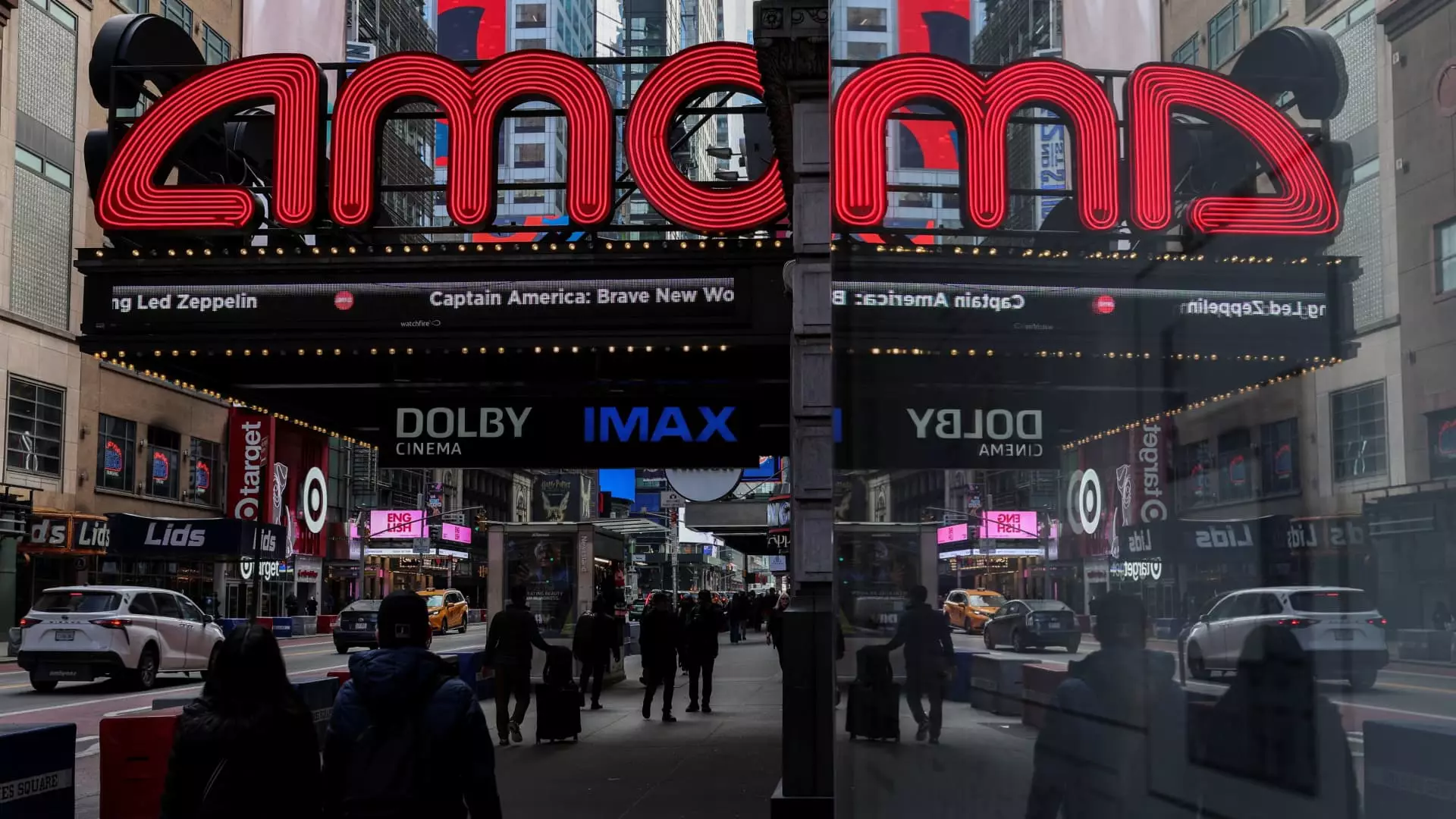As the cinematic landscape witnesses a resurgence of blockbuster films, AMC Entertainment is taking significant strides to elevate the moviegoing experience. The announcement of adding 40 Dolby Cinema theaters to its U.S. locations by the end of 2027 hardly feels organic; it’s a strategic gamble in an industry still trembling from the uncertainties of a post-pandemic world. With this move, AMC aims to cement its dominance as the world’s largest cinema chain while claiming its part of an expanding premium market. However, one must question whether this is a genuine expression of consumer desire or merely a knee-jerk reaction to dwindling audience numbers.
The premium movie experience, as touted by many industry leaders, is not just a trend—it’s seemingly becoming a necessity. AMC’s commitment to boost its number of premium large format (PLF) screens with partnerships both with Dolby and CJ 4DPLEX suggests that they intend to redefine the viewing experience. But one cannot overlook the underlying implications of these enhancements. Could the pursuit of luxurious seating and cutting-edge technology signal a gradual elitism within cinema? The industry’s focus on premium experiences, while undeniably appealing, threatens to widen the gap between the affluent moviegoers and the more traditional audience members who may be priced out of these experiences.
The Rise of Premium Formats and Its Implications
There’s an undeniable allure to seeing the latest franchises—think Marvel, DC, and Star Wars—on oversized screens with state-of-the-art technology. Films such as “Oppenheimer” and “Avatar: The Way of Water” thrive in these environments, further fueling the industry’s trajectory toward premium format films. But such growth raises critical questions. Are we now in an era where the worth of a cinematic experience is equated solely with how much you can pay? The average ticket price for premium formats hovers around $17, which is an 8% increase since 2021—a notable jump that suggests a willingness among audiences to pay more for an exceptional experience. But this inflation in ticket prices offers a concerning precursor to what could become the norm rather than the exception.
Indeed, the demographic that frequents these premium formats often reflects a particular socioeconomic status. Unfortunately, as cinemas escalate their focus on luxury and high-tech experiences, they relegate the average moviegoer to smaller, conventional screenings. There’s a growing irony in how the drive for inclusiveness in entertainment clashes with a business model that thrives on exclusivity.
The Future of Cinema and Audience Accessibility
AMC’s partnership with Dolby, while necessary for business survival, speaks volumes about a larger trend affecting the motion picture milieu. The market is moving towards experiences that promise to cater to a select audience, much to the detriment of the average viewer seeking affordability along with their escapism. This division doesn’t just reflect in ticket prices; it infiltrates everything from projectors to sound quality, with mediocrity becoming a byproduct for those who can’t afford to splurge.
The data from Comscore indicating a 33.7% rise in PLF screens over the last five years reveals that audiences are indeed embracing this evolution, but at what cost? Premium formats now garnish around 9.1% of the domestic box office, a significant leap that underlines their appeal among the movie-watching public. Yet, a troubling question looms: Is the rarity of these formats leading audiences into a cycle where only the best—those who can afford the premium price-tags—receive optimal viewing experiences, thus killing the communal aspect of cinema altogether?
The Necessity for Balance in a Shifting Landscape
In moving ahead with this transformation, what the film industry needs is balance. There’s no denying the excitement that accompanies the new age of cinematic experiences. Yet as we dive deeper into a world that effectively commodifies art, there must be room for traditional formats that cater to all societal sectors. Watching a film should not become an exclusive affair.
In viewing the world through my center-wing liberal lens, it is imperative to emphasize the need for inclusivity in cinema. Yes, innovation is key to maintaining relevance; however, relinquishing the chance for all classes to experience the magic and whimsy of film would be an egregious oversight. As AMC prepares for its ambitious expansion with premium formats, it must simultaneously commit to preserving the ethos of cinema: a shared experience that should never become a luxury reserved for the few.

